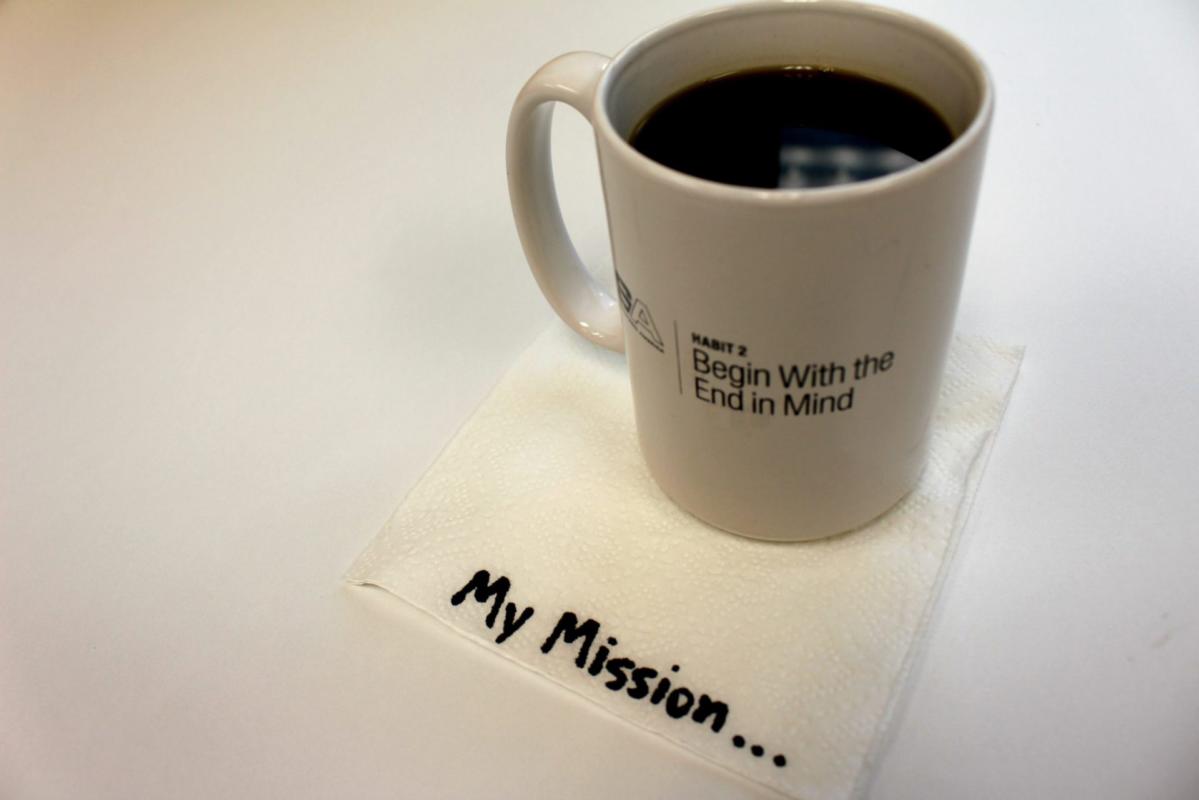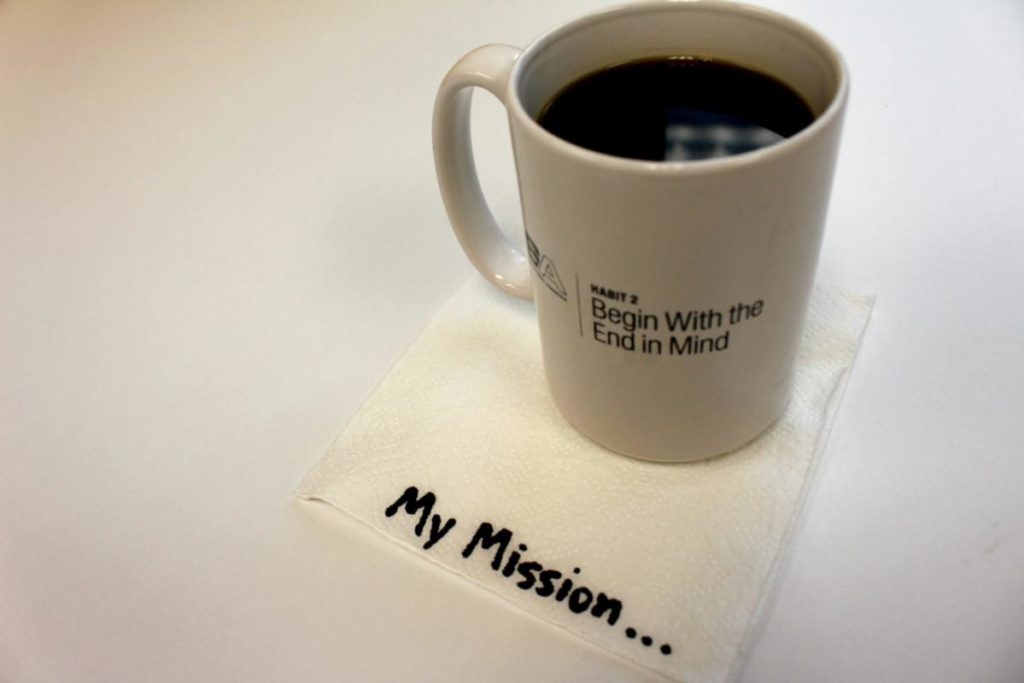
Get Personal with Covey’s Second Habit
 In our efforts to Find a Better Way, Strategic Americans all attend Franklin Covey’s The 7 Habits of Highly Effective People workshop. Over the next few months, you’ll hear about each of the seven habits from a different SA associate.
In our efforts to Find a Better Way, Strategic Americans all attend Franklin Covey’s The 7 Habits of Highly Effective People workshop. Over the next few months, you’ll hear about each of the seven habits from a different SA associate.
How a Personal Mission Statement Helps You Begin With the End in Mind®
In my experience, things go better when you have an idea of how you want it to turn out. For example, blindly going into a project without a plan – let’s say landscaping your yard – means it’s possible that it’s not going to turn out as well as if you had started with a vision of what you wanted the yard to look like when it was finished. Applied to the corporate world, a campaign will more likely be effective if you begin by knowing what goals you want to achieve and the strategies for how you’ll achieve them.
A couple months ago, I went through Franklin Covey’s The 7 Habits of Highly Effective People®. The second habit is titled Begin With the End in Mind®, and it poses the question, “How do I live with mission, vision and purpose?” The answer is by thinking about what you want and then planning how to get there.
The 7 Habits are meant to help you become more effective as a person, not just as an employee. So to help our group of trainees figure out how to live with vision and purpose in our own lives, Covey encourages us to develop a personal mission statement. We were given about 10 minutes during the training to write our own mission statements and told it could be a single sentence such as “Be the person my dog thinks I am” or a collection of paragraphs. The task seemed overwhelming to do in the short time we were granted, but the goal wasn’t to have a statement set in stone by the end of the day. It was to get us thinking about our vision for our lives.
In my own life, I know this isn’t something I do well. I don’t often set aside time for myself to just think about what I want to get out of life in the long run because I get caught up in day-to-day deadlines and completing what’s in front of me at the moment. But, Covey training helped me slow down and think about what’s important to me and what I want to have accomplished at the end of my life, both personally and professionally.
Luckily, a personal mission statement isn’t set in stone. It doesn’t even have to be formulated into one perfect sentence. So, during the time allowed in our training, I wrote down some of my own goals. Having pieces of a personal mission statement in writing has helped me keep the end in mind, and it has impacted how I spend my time.
For example, I spend less time binge-watching Netflix after work and more time on activities included in my personal mission statement. Sometimes that means going for a run with my husband, sometimes it’s learning more about a topic I’m interested in, and sometimes it really is taking time to relax and watching one of my favorite shows on Netflix. Either way, on days when I know I’ve engaged in an activity that contributes to my goals, I usually end the day feeling happier and more productive.
Another good point Covey training made is that you can, and should, regularly dedicate time to revisit your personal mission statement. After all, lots of things happen in life that may change your goals. Since SA recently started a new fiscal year, I’m focusing on work goals for the next year. But I’ve also allotted time this month, and periodically throughout the year, to review my personal mission statement, make sure my goals align with it and remind myself, for each new project, to begin with the end in mind.



